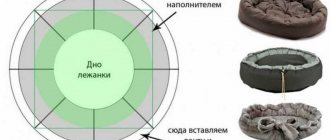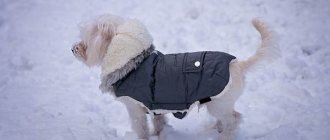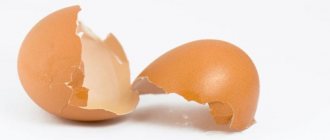Treats and treats for dogs play an important role in the life of every little tailed plaything. For an owner, this is one of the best ways to reward a pet for good behavior or effort, express your approval, and simply pamper your beloved tomboy. For the dog, this is a signal: he did everything right - he pleased the owner - he received a treat.
Rewarding with treats also strengthens the trusting relationship between an animal and a person.
So how to choose the right treats so that they not only suit the situation, but also do not harm the health of your four-legged pet?!
What are treats for?
Most often, dog treats are used in the following cases:
- As a reward for training, training or good behavior. There are several options for rewarding your pet. Conventionally, they can be divided into three types: food, play and direct contact with the animal. To choose the right type of reward, you need to find out which type is most suitable for your pet. Almost all dogs are food eaters. That is, in exchange for food, they will happily do whatever the owner says. Therefore, rewarding with a treat is perhaps the most win-win. The main thing is to choose the right treat for which your little one will be ready to do the impossible. And one more important point - the treat must match the situation. That is, during training some treats are used, and for other cases completely different ones. We'll talk about this further.
- Treats can be used not only as a reward for a dog during training, but also as a way to give medications to a tailed, unwanted dog.
- Treats are also good when you need to keep your pet occupied or distracted from something for a while (for example, while you are away).
- In addition, various chewing toys work well as a tooth scratcher when the puppy’s teeth change and he constantly needs to chew on something.
- Well, the last option on the list, but far from the least in terms of its useful qualities, is a treat as a means of preventing the appearance of tartar in dogs.
What should you consider when choosing treats?
Composition of the product. Experts advise reading the entire composition from beginning to end. Some components, even in small doses, can cause irreparable harm to a pet's health. For example:
- BHA, labeled as E-320;
- propyl gallate, E-310;
- propylene glycol, E-1520;
- ethoxyquin, E-324.
A reputable manufacturer will indicate all ingredients and their percentages. If this information is not available, then you should not buy this product;
- Dog size. If the dosage is incorrect, it can cause obesity in your pet;
- Animal lifestyle;
- Food preferences;
- Own financial capabilities.
How to properly give treats to your dog
If you just want to keep your pet busy with a treat, then there are no specific recommendations on how to offer this treat. But if you are engaged in training and education, here are some points that must be taken into account:
- The animal should receive treats only as a reward. You should not give this delicious food as a regular meal or for no reason. This only enhances the effect: anticipation, joy, trying to follow the command and get the most delicious treat in the world.
- Offer rewards directly during the execution of the command, but not later. For example, you commanded “Sit” and the pet sat down. If, after executing a command, you offer a treat and he jumps up for it, the command is devalued. A delicacy is no longer regarded as encouragement, but as begging.
- If you still have a small puppy who is just making his first progress, be it the “Fu” command or a successful “visit to the street toilet,” be sure to reward your pet with a treat for each such achievement, for each correctly executed command. In the future, when the four-legged dog learns to do everything correctly, it is not necessary to reward it with a treat every time. You can use other methods of encouragement: praise, stroking, play.
Crunchy treats
Hard, crunchy treats, sometimes called dog biscuits, are available in a variety of flavors, shapes, and sizes. The size of the treat should be appropriate for the size of your dog. Choose a brand that meets the same standards as high-quality dog foods. Crunchy treats are a great daily reward for your dog.
Treats for training
Pieces of treats should be small in size, since this is still not food, but a reward. In addition, during training, the dog should quickly swallow the treat and not fiddle with it.
The treat should be moderately dried so as not to get your hands and clothes too dirty.
If we take the total daily diet as a percentage, then the amount of treats should not exceed 5-10% of the total diet. Why? Yes, here’s why: so that when training a dog, he will happily work for a tasty treat, it is advisable to make it from meat, liver or any other natural product. And this is quite filling and high in calories.
Pieces of dried or oven-dried meat or offal are ideal for training. As a rule, for Jackusik I cook pieces of liver, lung or turkey. I will tell you how to do this further.
Kinds
There are many types of treats, differing in the form of release, appearance, and composition of the product. Among the most popular options are the following.
- Natural treats for dogs . These include beef lung, ox root, dried strips of liver and meat, and bones. The products are safe and tasty, and are of high quality. With proper processing and careful selection of raw materials, such treats are safe for the dog’s health.
- Sublimated products. It is sold in cans or bags and is produced by low-temperature processing of meat or fish. There is only one danger - if the technology is violated, the pet may get an intestinal disorder.
- Chewy sticks and sausages. They contain about 20% meat and filler additives; they can serve exclusively as a treat or act as a teeth cleaner or mouth freshener. They are usually hypoallergenic and may contain calcium and vitamins.
- Baked snacks . Usually these are healthy products, similar in composition to dry food. Additionally, amino acids may be included to increase the dog’s performance. One of the most high-calorie options.
- Biscuits . Dog biscuits have the same calorie content as those made for humans. But the sugar and fat content is lower here. It is worth choosing small biscuits so as not to exceed the calorie intake of the diet.
- Healthy gelatin. Available in the form of seeds, they have a beneficial effect on the condition of bones and teeth. Suitable for juniors and teenagers during the teething period.
Separately, it is worth mentioning product options when a tasty treat is hidden inside the toy. They are aimed at service dogs, animal athletes, and are used during training.
With the help of such toys with a secret, pets are taught to perform actions unusual for them.
What kind of treat can you offer your pet?
There are two types of treats for dogs: homemade and store-bought. Let's look at each one.
Shop treats
Of course, from time to time I buy Jackusika treats at the store. You don’t always have time to cook some tasty treat, but you still want to pamper your “rodent”.
The range of treats and treats for dogs offered in stores is very diverse: toothpick treats, training snacks, cookies, sausages, jerky and dried meat, tails, hooves, ears, dried tripe, pieces of lung... You just fall into a stupor: what could you buy?!
All bags are bright and beautiful, with appetite-tempting pictures depicting fresh grains, vegetables and meat with a golden brown crust.
But don’t rush to grab the first package you like off the shelf and run to the checkout. After all, as they say, they greet you only by their clothes, but they see you off... But we won’t think about how they see you off... I’ll try to at least tell you a little about what exactly I pay attention to when choosing a purchased treat, so as not to harm my beloved little tail.
The most important thing to pay attention to is where the treat was produced. If this is China, you should know that in China there are no regulations, standards or technologies for the production of animal products. Products for four-legged animals are produced without any control and their use is initially considered potentially risky.
As for Russian manufacturers, everything here is extremely simple. Yes, there are norms, yes, there is control. But, unfortunately, our reality is such that we have to rely on the integrity of the manufacturer. Everything will depend on the specific batch of goods: hope that the raw materials will be of high quality, and the preparation technologies are strictly observed. Unfortunately, this is also a kind of roulette.
I usually carefully study the composition of the contents of the bags. All main components are listed in descending order. The first - the content of which is the maximum.
Be sure to read everything to the end. If the delicacy contains flavor enhancers, artificial colors and preservatives, then it is better not to take such treats.
As for manufacturers, several brands are currently leading the market: Titbit, Village Delicacies, Triol, Biff, Pedigree.
Unfortunately, lately the reviews about these branded treats have not been positive at all. Something from the category of “pampered with a treat, but barely pumped out.” Communities are even created on social networks where dog breeders share “horror stories” of the consequences of eating store-bought treats. The most common consequences are disruption of the gastrointestinal tract, diarrhea, vomiting and long-term treatment. And if you look carefully at the back side of beautiful packaging, you will see that many “brands” are simply silent about the composition of the products, and this is the first indicator of a low-quality product. On some, it is directly written: “Manufactured in China.”
When choosing purchased treats and treats for your dog, be sure to study the composition of the product and pay attention to where the product was produced!
Of course, not a single manufacturer of snacks and treats for dogs has the goal of killing the animal. But, unfortunately, there are many cases of poisoning and even death after eating such treats.
When buying a ready-made treat for your beloved pet, you are taking a kind of risk. There can be a 100% guarantee only if you yourself prepare a tasty morsel for your favorite shilopopik.
Homemade dog treats
I want to tell you what you can offer your beloved pet as a natural homemade treat and what goodies I pamper my Jackusie with.
The simplest thing you can pamper your pet with is pieces of vegetables and fruits. Apple, carrot, cucumber, pear, banana. Everything your dog loves. But remember: everything is good in moderation. Excessive consumption of fruit treats can lead to diabetes in dogs.
Many people, especially novice dog breeders, often ask: “Is it possible to give a dog bones as a treat?” It is possible, but not all. Read about which bones can be given to dogs and which are strictly contraindicated.
As for our “bone dishes”, specifically from bones, from time to time, we give Jack these raw lamb or beef thighs or legs.
I prefer to give lamb ones as they are much smaller in size. Our dog is still small, and the huge leg of beef is too big for him. If you have a large breed dog, then it will deal with such a leg quickly.
What you need to consider if you give your pet these bones:
- Firstly, they must be hard enough.
- Under no circumstances should the bones be chopped. The bone must be intact. This is necessary so that the animal cannot bite off and swallow a piece or splinter of bone.
- It is best to give the bone raw, after freezing it for 2-3 days. Why raw? Yes, because when boiled, this delicacy can cause intestinal obstruction.
Beef marrow bones will be an excellent delicacy. Their structure is quite hard, so even the most toothy dog is unlikely to be able to chew them. But even the most gastronomically fastidious dog will not refuse to feast on the tasty contents (the brain).
The most important thing you need to pay attention to when buying such brain bones is the evenness of the cut, so that there are no nicks or splinters, so that the dog does not injure its mouth and tongue. I buy these bones in supermarkets. They are delivered there from factories where cutting is done industrially - smoothly, without any notches. Jack is happy to deal with such a tasty treat.
If your pet does not know how to gnaw and gnaw bones, and you are still afraid to give them, you can safely treat him to beef throat (trachea). The trachea consists of hard cartilage. In addition to being an excellent chew, it is also an irreplaceable source of gelatin, which is good for bones and joints. Even if your dog swallows a piece of this delicacy, nothing bad will happen.
Deer antlers can be an excellent alternative to bones. This is a tasty, healthy and, most importantly, safe solid treat for dogs.
If you love to cook, you can make your own delicious treats. By preparing a treat for your pet yourself, you can be 100% sure that it will not only be tasty, but also not harmful to health.
There are many recipes for homemade treats that you can use to simply pamper your favorite barbosie, and which can be prepared as a reward for training.
Dental chews and bone-like treats
Dental chews and bone-like treats are not made from animal bones. Some are made from cornstarch or other easily digestible materials. Because of the degree of chewing required to consume these treats, some experts believe they promote dental health.
While these treats are safer than real bones, they can still cause gastrointestinal blockage if they are “swallowed.” Additionally, if the treat is too hard, it can lead to tooth fractures or oral injuries.
Always choose the right size chew for your dog. Don't choose chewing gum if it hits your knee—that means it's too hard on your dog's teeth. Make sure your dog is supervised when eating any food.
Restrictions on treats
Of course, any dog breeder uses trial and error to select a treat that is not only tasty, but also healthy.
We've already looked at treats that may be helpful. Now let's talk about those treats and treats for dogs that should be given in limited quantities or completely eliminated.
Treats that should not be given
When it comes to store-bought treats, I wouldn't recommend buying dried beef intestines. The fact is that we can only guess how the intestines are processed in production and whether they are processed at all. There are suggestions that it is the uncleaned intestines that are used in the production of tasty treats. And this is a breeding ground for various bacteria. According to reviews from owners of four-legged dogs, after consuming just such dried intestinal treats, cases of indigestion and even hepatitis in dogs become more frequent.
The next treat that many veterinarians place a “taboo” on is rawhide and ear treats. All pet owners have more than once looked at the dazzling white bones, twisted at the edges into a beautiful knot..., at the little white ears and treats in the form of braids, slippers or balls.
All these delicacies are made of rawhide (hides). To make it white, the skin is treated with various reagents, including formaldehyde, which is very dangerous. Also, if you notice, almost all of the bleached goodies are made in China.
As for the so-called homemade treats, it is strictly forbidden to give your dog “goodies” from your table. Sausages, sausages, smoked meats, fatty and sweet foods can at least cause an upset stomach, and with constant consumption, pancreatitis, allergies, diabetes and other serious diseases.
It should be remembered that not all bones are suitable as treats.
Treats to be given in limited quantities
But you need to be more careful with these goodies:
- Cheeses. Almost all dogs love cheese. Our Jack, as they say, is “ready to sell his soul” for a piece of this tasty salty treat. One of the main positive qualities of cheese is that it does not crumble. This delicacy can be prepared in a matter of seconds. Among the disadvantages: in large quantities, cheese causes gastrointestinal upset, after which the dog becomes thirsty, and sometimes allergies can occur. If you want to pamper your pet with cheese, choose low-fat varieties. Offer cheese infrequently and in minimal quantities.
- Chicken and chicken by-products. This is a good option as a treat, but only if your pet is not allergic to this type of bird. Chicken and offal are not very suitable for training, since offal is still a heavy food, and chicken fillet crumbles a lot.
The Best Super Premium Wet Dog Foods
The proportions of high-quality ingredients in this category of wet food are carefully calculated. In this case, great attention is paid not only to the protein component, but also to the amino acid composition. A series of super-premium canned foods includes various diet options designed for animals of different breeds, ages, physical condition and activity. Meat in this food is at least 40%! The use of artificial additives and soy is excluded. The mixture necessarily contains vegetables, fruits, grains, and herbs. Consequently, along with the food, the four-legged friend receives protein, carbohydrates, fiber, as well as the entire list of necessary vitamins and minerals. The cost of such canned food is quite high, however, it is justified.
Hills Ideal Balance canned food turned out to be the most balanced in composition
There are two options for this brand of food. In the first case, chicken is the main ingredient, in the second - turkey meat, which can be an excellent alternative to chicken in case of food allergies. Pork completes the wet mixture. Vegetables account for about 4% of the product. Here you will also find potato starch, flax seed, and wheat bran. The composition is enriched with all the vitamins and minerals necessary for the animal to live a full life. Hills product has ideally balanced fatty acids.
Among the undeniable positive characteristics of the product:
- balanced composition;
- the presence of an alternative in the form of canned turkey (if you are intolerant to chicken meat).
The clear disadvantages of this type of product were:
- small variety of diet variations (only 2 types of feed);
- small proportion of protein and fat content.
Many buyers have provided positive reviews of the product. This is especially true for owners whose pets, for whatever reason, do not eat chicken.
The best option for combating pet obesity is Eukanuba wet food.
The basis of a completely traditional food is chicken meat; the secondary components can be by-products, processed beets, vegetable oil, vitamins, minerals and fats. The mixture is nutritious and attractive even to rather picky dogs.
Pig ears
Made from pig ears, these are a tasty but greasy treat for your dog. They may also be treated with chemicals that are considered unsafe. Pig ears should be avoided, especially in dogs at risk of obesity. If you can find a source of pig ears that are not overly processed with chemicals, they should be kept to a minimum due to their high fat content.
Rawhide
Raw hide is generally not recommended for dogs unless it is specifically processed to improve digestibility. Made from animal hides and often treated with various chemicals, rawhide can sometimes cause gastrointestinal blockages or other complications.
Try feeding cornstarch-based “bones” or chewing toothpaste instead. Some types of rawhide are specially formulated by veterinarians to be easily digestible and beneficial for teeth. Ask your veterinarian about these options.
Selection and combination of incentives
Before choosing one of the proposed reward options, you need to listen to the main object of training, that is, your dog. Many experienced instructors suggest conducting an initial experiment to select the main reward . It is carried out as follows: the instructor holds the dog on a leash, and at a short distance from her you place a ball, a treat and a rubber tug toy on the ground. And sit down nearby. When the instructor releases the dog, it will go to the object that is the best reward in its eyes.
During training, after successfully completing a command, you can praise the dog in one way or combine or alternate several . For example, first a treat, then petting and verbal praise.
Take a closer look at your pet. Only you know him like no one else, so only you can find the shortest path to the heart of your faithful four-legged friend.
Animal bones and hooves
Dogs should not be given animal bones or hooves. This can cause chipped or broken teeth and perforation or blockage of the gastrointestinal tract. Bones and hooves can be very harmful to all types of dogs, but the most dangerous are cooked bones and any type of poultry bone (cooked or raw). This also applies to deer antlers - they are too difficult to secure. Instead, encourage your dog to chew teeth and other easily digestible bones.











